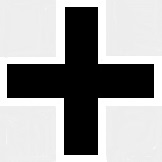 |
 |
 |
 |
Wings of the Great War WW11702 German Junkers D.1 Fighter - Western Front, Autumn 1918 (1:72 Scale)
"Open fire only at close range, and then only when the opponent is squarely in your sights."
- Dicta Boelcke
 The Junkers D.I (factory designation J 9) was a monoplane fighter aircraft produced in Germany late in World War I, significant for becoming the first all-metal fighter to enter service. The prototype, a private venture by Junkers named the J 7, first flew on September 17th, 1917, going through nearly a half-dozen detail changes in its design during its tests. When it was demonstrated to the Idflieg early the following year it proved impressive enough to result in an order for three additional aircraft for trials. The changes made by Junkers were significant enough for the firm to rename the next example the J 9, which was supplied to the Idflieg instead of the three J 7s ordered.
Lengthened-fuselage and extended wingspan Junkers D.I (J.9/II) undergoing evaluation
The Junkers D.I (factory designation J 9) was a monoplane fighter aircraft produced in Germany late in World War I, significant for becoming the first all-metal fighter to enter service. The prototype, a private venture by Junkers named the J 7, first flew on September 17th, 1917, going through nearly a half-dozen detail changes in its design during its tests. When it was demonstrated to the Idflieg early the following year it proved impressive enough to result in an order for three additional aircraft for trials. The changes made by Junkers were significant enough for the firm to rename the next example the J 9, which was supplied to the Idflieg instead of the three J 7s ordered.
Lengthened-fuselage and extended wingspan Junkers D.I (J.9/II) undergoing evaluation
During tests, the J 9 lacked the maneuverability necessary for a front-line fighter but was judged fit for a naval fighter and a batch of 12 was ordered. These were supplied to a naval unit by September 1918, which then moved to the Eastern Front after the Armistice.
Pictured here is a 1:72 scale replica of a German Junkers D.1 fighter then deployed to the Western Front during Autumn 1918.
Now in stock!
Dimensions:
Length: 4-inches
Wingspan: 5-inches
Release Date: October 2024
Historical Account: "Steely Eyed Beasts" - The world's first all-metal airplane, the Junkers J. was completed in 1915 under the direction of Professor Hugo Junkers. Its structure consisted of ribbed metal I sheeting with internal tubular bracing.
Installed in the pointed nose was a 120 h.p. Mercedes engine, fitted with a 'chimney'-type exhaust pipe, and an interesting innovation-an under slung radiator. The wings were thick in section, with sharply cut tips and aileron' which extended behind the line of the trailing-edge. The fuselage was square in section. The tail and balanced rudder had square edges, and the whole appearance of the aircraft was strong but crude. Nicknamed the 'Blechesel' (Tin Donkey), the D-1 was, quite naturally, regarded with suspicion by the authorities.
In 1916, a development of the J-1, the J.2. was constructed; a single-seater fighter monoplane with remarkably modern lines. A deep under slung radiator was provided for its 160 h.p. Mercedes engine and a crash pylon was fixed behind the cockpit to protect the pilot in the event of the plane turning over. A single Spandau gun was synchronized to fire through the revolving air screw. The J.2 was given the military designation of E-II, but only six examples. E250-255. were built.
Although Professor Junkers had achieved only partial success with his designs, officialdom was impressed with their strength, and persuaded him to work with Anthony Fokker on the design of a new armored two-seater biplane intended for army co-operation duty. The new model, the J.4 (military designation J-I), proved to be most useful, but relations between the partners were never happy.
The next Junkers fighter design was the J.7, another all-metal monoplane, which made its appearance in October 1917. In its early form, the nose installation of its 160 h.p. Mercedes engine was fairly well streamlined and the air screw had a small spinner. A clumsy exhaust pipe stretched down the starboard side of the fuselage. Almost as an afterthought, a radiator was fixed inconveniently above the cylinders. Wing construction consisted of ribbed aluminum, braced internally by seven parallel tubular metal spars interconnected to form Warren girders.
Oddly shaped unequal-chord ailerons replaced the original rotating wingtips. The fuselage was covered with horizontally corrugated metal strips. Both elevators and rudder were balanced. A high head-rest behind the cockpit acted as a crash pylon. A second 17 had a neat under slung radiator, modified undercarriage and a blunt nose without a spinner; the headrest was reduced to skeleton form. A third version, equipped with a car-type radiator, was an excellent airplane and would have performed with success at the Adlershof fighter competition in January 1918. Unfortunately, only four weeks before the contest it sustained damage, when flown by Fokker himself.
A further development, the 3.9 (military designation D-I), was brought out in March 1918. It was flown with both the 150 h.p. Mercedes and 185 h.p. BMW engines. and carried twin Spandau guns. The D-1 was speedy and maneuverable but was more difficult to build than the useful Fokker D-VII, which was already in production. Only forty-one examples reached the front; these were issued in ones and twos to various Jagdstaffeln.
Length: 4-inches
Wingspan: 5-inches
|
|
 |
 |
 |
 |
 |
 |
 |
 |
 |
 |
 |
Features
- Resin construction
- Accurate markings and insignia
- Comes with pilot figure
- Comes with fully articulated display stand
- Each model comes with a custom-matching product description card that can be mounted on top of the base.
|
|
 |
 |
 |
 |

|


